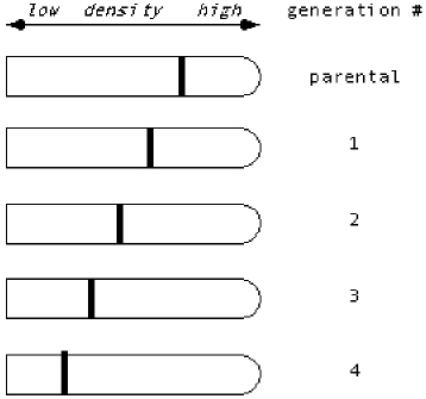Multiple Choice
Suppose Meselson & Stahl had observed the following data in their famous experiment involving a switch from medium containing 15N to 14N.What would they have concluded about the nature of DNA replication? 
A) They still would have concluded that DNA replication is semiconservative, i.e., each double helix contains one parental strand and one newly synthesized strand.
B) They would have concluded that DNA replication is conservative, i.e., one double helix contains only the parental strands, while the other contains only newly synthesized DNA.
C) They would have concluded that DNA replication is dispersive/random, i.e., each strand of each double helix contains a mixture of parental and newly synthesized sequences.
D) They would have been unable to distinguish which is correct.
Correct Answer:

Verified
Correct Answer:
Verified
Q29: Since DNA Polymerase II has endonuclease activity,
Q42: The mechanism of breakage and reunion of
Q45: In Escherichia coli , the enzyme principally
Q46: The DNA polymerases in eukaryotes have similar
Q50: Which of the following is not a
Q54: All the following describe the general mechanism
Q55: Exhibit 10A <img src="https://d2lvgg3v3hfg70.cloudfront.net/TB1882/.jpg" alt="Exhibit 10A
Q69: Eukaryotic DNA polymerases differ from those of
Q71: The process by which an mRNA base
Q84: E. coli replication on the lagging strand<br>A)